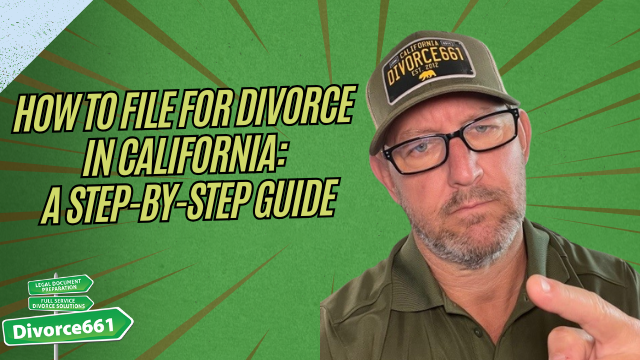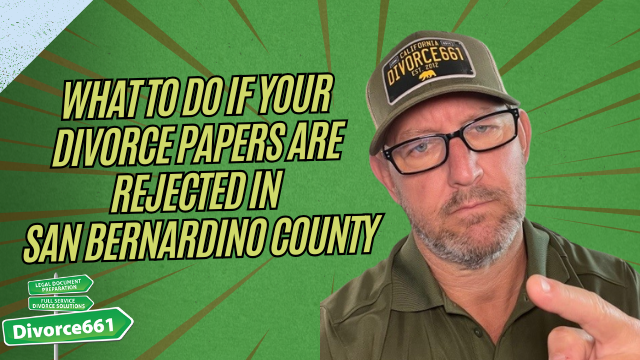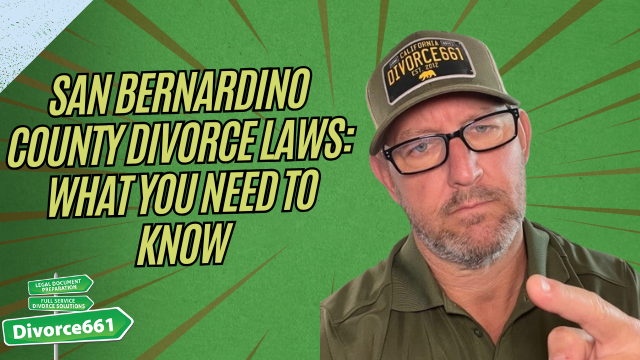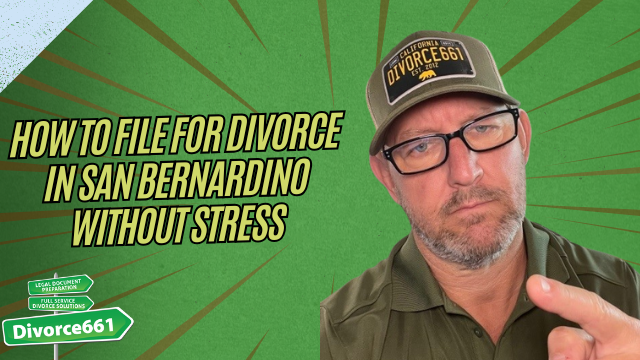How to Serve Divorce Papers in California
Hi, I’m Tim Blankenship with Divorce661. In the accompanying video I walk through one of the most important procedural steps in a California divorce: properly serving your spouse with the divorce papers. Do it wrong and your case can be delayed or even rejected by the court. Below I’ll explain the step‑by‑step process, common pitfalls, and how to make sure service is done legally and correctly so your case moves forward.
Why proper service matters
Service gives your spouse legal notice that a divorce has been filed. The court needs proof that they were notified before the case can proceed. If service is not done correctly, judges can delay hearings, refuse to accept filings, or dismiss parts of your case. Correct service protects your timeline and your legal rights.
Step‑by‑step: what to do after you file
- File your initial documents with the court: the Petition, Summons, and any required child custody/support forms.
- The court will stamp your filed copies and return them with a case number.
- Your next task is to serve your spouse with those filed copies so the court and your spouse both have official notice.
- After service is complete, you must file the appropriate proof of service documents with the court to confirm it was done correctly.
Serving by mail (the easiest option when your spouse cooperates)
If your spouse is willing to cooperate, the cleanest and simplest method is service by mail using a Notice of Acknowledgment and Receipt (sometimes abbreviated NAR or NR). Here’s how it works:
- Mail the required documents to your spouse along with the Notice of Acknowledgment and Receipt.
- Your spouse signs the notice acknowledging they received the paperwork and then returns it to you.
- You file that signed notice with the court as proof of service.
When done correctly, this avoids the need for personal service and is fast and inexpensive. But it requires your spouse’s cooperation and a timely return of the signed notice.
Personal service: when mail won’t work
If your spouse won’t cooperate, won’t accept or return the acknowledgment, or cannot be reached by mail, you must use personal service. Key points:
- Personal service means another person physically hands the documents to your spouse.
- The server must be at least 18 years old and cannot be you (the filer).
- Common servers include a friend, relative (over 18), or a professional process server.
- Once the documents are handed over, the server completes a Proof of Service of Summons (or similar proof) and that must be filed with the court.
Proof of service: the court needs documentation
After either mail service with an acknowledgment or personal service, you must file the correct proof document with the court. This is the court’s record that service was completed correctly and on time. Without it, your case will not proceed.
Common mistakes (and a real example)
One common misconception is that email or texting the documents is sufficient. It’s not. I recently worked with a client who served their spouse by email thinking that would be OK. The court rejected it and the case was stalled for weeks until we stepped in and arranged proper service. Mistakes like this waste time, increase stress, and can add cost.
How Divorce661 can help
At Divorce661 we handle the entire service process for our clients. Whether your spouse is cooperative or not, we make sure service is done legally and correctly so your case moves forward without delay. Our services include:
- Preparing and mailing service packets with the correct acknowledgement forms
- Arranging personal service by an experienced process server when needed
- Filing the required proof of service documents with the court
- Answering questions and guiding you through deadlines and next steps
If you filed for divorce in California and aren’t sure how to serve your spouse, visit divorce661.com to schedule a free consultation. We’ll walk you through the options or handle service for you—saving time, stress, and frustration.
Quick checklist before you serve
- Have stamped, filed copies of Petition and Summons with the case number.
- Decide whether mail with a Notice of Acknowledgment and Receipt is possible.
- If not, arrange personal service with someone over 18 who is not you.
- Make sure the server completes the correct Proof of Service form.
- File the Proof of Service with the court promptly.
- Keep copies of everything for your records.
Final thoughts
Proper service of divorce papers in California is a technical but critical step. Use mail with an acknowledgment when you can, and use personal service when you must. Mistakes—like relying on email—will delay your case. If you need help, we make this part of the process simple and correct so your case can move forward. Visit divorce661.com to get started with a free consultation.










